Loving Where We Live
Litter is a stain on the landscape that represents a lack of pride—and it does real harm.
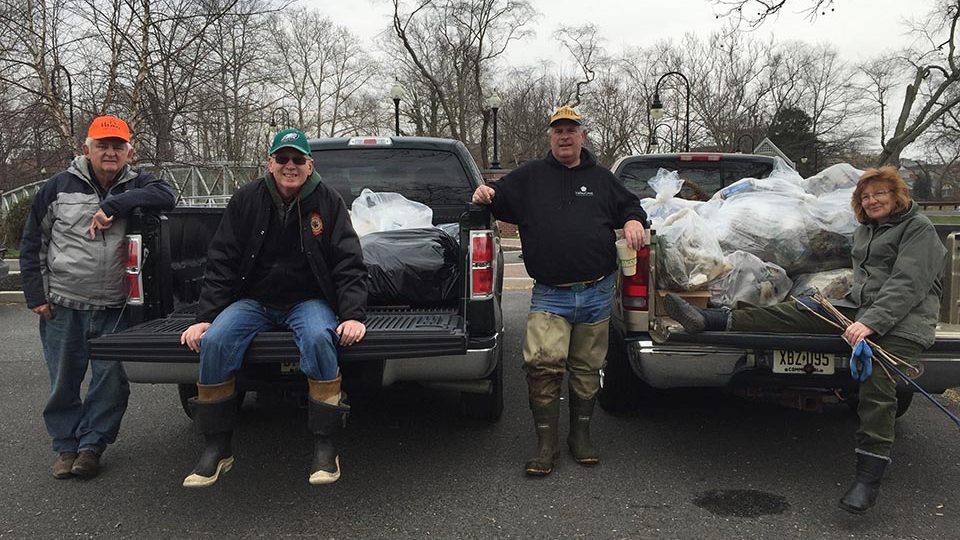
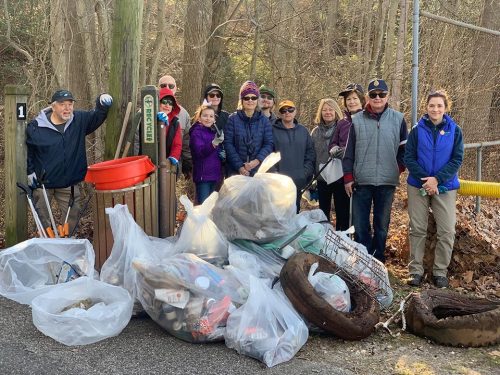
In 1971, shortly before I was to graduate high school, Keep America Beautiful, Inc. (KAB) launched a campaign that featured a crying Indian. I thought the ad was very effective, playing on viewers’ discomfort with the colonial treatment of Native Americans as well as feelings about patriotism. However as I review the public service announcement (PSA) today it seems rather overly dramatic and suspect.
Sadly, the PSA is layered with something much more complicated and sinister, even more deceptive than the role being played by an Italian American actor as opposed to a Native American (see “The Crying Indian” box on page 9). As it turns out, the KAB organization was formed in 1953 by beverage companies hoping to keep the public conversation focused on litter and not on the growing number of disposable containers produced by the factories that provided the bottles.
It is clear when you go into a large supermarket that there is a plethora of beverages in plastic and glass bottles to select from. Today there are 386 soft drink businesses in the United States alone (IBIS World, 2023), all producing a multitude of disposable containers.
At some point the corporate narrative switched from our responsibility for cleaning up after ourselves to “recycling.” Corporate campaigns didn’t stress reuse, or carrying our own bottle of water, or even a healthier lifestyle of avoiding sugary drinks. Rather the problem could be addressed by recycling.
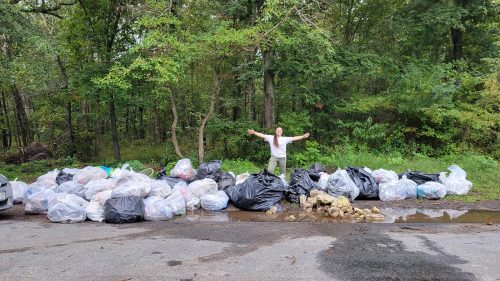
In reality the plastic industry has spent tens of millions of dollars promoting the benefits of plastic. Most of it has been buried, burned, or dumped into the ocean. Since the development of plastic, less than 10 percent has ever been recycled.
Plastic use continues to increase. New plastic is both of a higher quality and cheaper to produce, resulting in little demand for used plastics.
When investigating the “crying Indian” PSA in preparation for this article I was devastated to learn that the campaign was essentially corporate greenwashing, and the KAB was attempting to shift blame for the litter crisis on the consumer, who of course does play a role. The PSA’s impact nevertheless still prevails: Litter is a stain on the landscape—that represents a lack of pride and does real harm. Influencing people not to litter is important, but we shouldn’t avoid the need to move away from one-time-use containers that deplete our natural resources and despoil our landscapes.
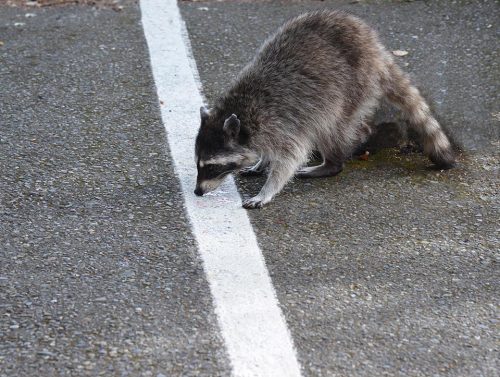
With the advent of Valentine’s Day I would like to advocate “Loving Where We Live.” Adopt a pride of place and don’t litter. Somehow I suspect that the folks who read this column are not responsible for litter, but we can still be responsible for making a difference. The most effective anti-litter campaigns have been those that target young people and/or develop a sense of community pride. With our words and actions we can help teach young people to love where they live, and then to care for where they live.
We can also become actively involved in maintaining a cleaner community. Each morning my walking buddies and I pick up litter, mostly plastic bottles and cans.
I’m appalled when I see this litter along our roadways. It simply seems like keeping trash in your vehicle until you can dispose of it properly is an easy-peasy act of courtesy to the world we live in. Roadway trash, aside from being unsightly, can cause real issues for animals, people, and the ecosystem. Littering is diametrically opposite to loving and respecting your region; it’s wanton disregard for the environment.
I used to think that tossing something biodegradable like a banana peel or apple core in a wooded area along the road was harmless. But foodstuffs often attract small animals like rodents, which in turn can attract predator species like birds of prey, foxes, bobcats. Every year American eagles, owls, and other birds of prey are involved in collisions with vehicles, generally caused by swooping low across the roadway to capture their quarry. These collisions obviously have ramifications for cars and people. A deer or wild turkey can cause a car to be totaled and its occupants hurt or killed.
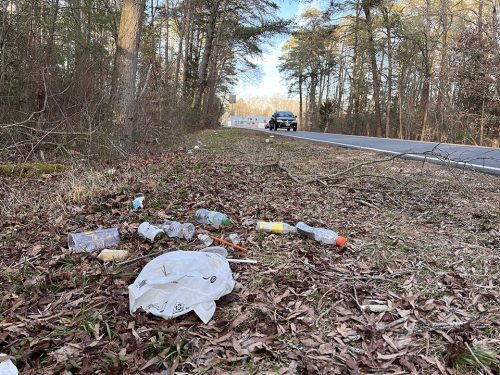
Plastics tossed in the road often end up in our waterways. Some are thrown directly into streams and rivers and ultimately enter the food chain as microplastics, which bio-accumulate after being consumed by small species that are eaten by larger predatory fish. In the end, all these pollutants find their way into our food supply—and not only in the fish we eat; 90 percent of the sea salt we consume is said to be rife with plastic. A number of studies estimate that by 2050 there will be more pounds of plastic in the oceans than fish.
If you think something as small as a cigarette butt is harmless, think again. One discarded filter can pollute 7.5 liters of water in just one hour. This polluted water kills ocean creatures. Why? Cigarette butts contain nicotine, along with heavy metals like lead and arsenic. Some 7,000 carcinogens are found in discarded butts.
The cigarette litter problem is compounded by packaging and lighters, not to mention the social and environmental impacts of deforestation, farmland devoted to tobacco rather than food, fires to clear land for tobacco plantations, health costs, cancer, and shattered lives.
In 1986 New Jersey passed the Clean Communities Act that establishes a Clean Community Program in every county. In Cumberland County our Improvement Authority (or simply “The Authority”) coordinates this program. The organization with which I am affiliated, CU Maurice River, has worked with The Authority for many years. Its coordination and assistance in our group’s cleanups has been stellar. In fact it has enabled us to multiply our effectiveness manyfold by providing tools such as bags, gloves, and trash grabbers, as well as providing pickup and transfer to the solid waste facility.
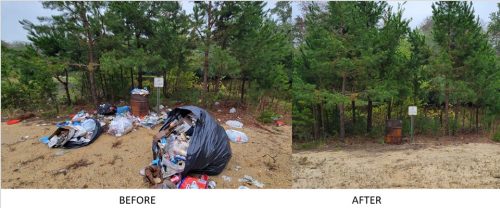
The Authority has a multifaceted approach to the cleanup of county roadways and local parks. On roadways The Authority maintains a crew that addresses the problem on weekdays, and on weekends the Sheriff’s Labor Assistance program manages community service crews that pick up roadside trash. Volunteer coordination is another tactical approach in the arsenal for their litter battle.
Each year the county coordinates two massive cleanups—the “Annual Trash Hunt” in March and the “Waterways Cleanup” in September. Many different organizations get involved in volunteering for these efforts. In 2023 the Annual Trash Hunt had 474 volunteers representing 30 participating groups. They picked up 19 tons of trash and 4.4 tons of tires.
The Waterways Cleanup in September is traditionally a smaller event; last year 153 people collected 2.8 tons of trash and tires. The waterways cleanup is not simply water-based; trash is gathered from river and creek buffers as well as adjacent properties.
Collectively in 2023 this multifaceted approach gathered approximately 60 tons of trash from roadways, parks, and waterways throughout Cumberland County.
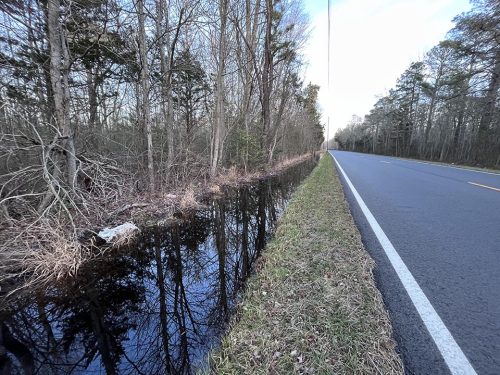
Any successful community trash effort involves outreach and education. The Authority is represented at about 45 existing events; staff members go to classrooms and fairs with educational materials. There is a school-based program with a magician emphasizing the importance of recycling. Each year the Authority has a Watershed Ambassador who coordinates additional cleanups. The staff also offers tours of the county’s solid waste complex.
The extent of a community’s cleanliness often rests on its will, spirit, and dedication to pride of place. One interesting factor is that litter attracts litter. Evidently, litterers feel more comfortable tossing something out when someone has already fouled a spot. So tidiness is infectious as well, and thus cleanups are essential to success.
On this Valentine’s Day, let’s be reminded that the best way to spread the love to our environs is to dispose of trash properly every day and to teach others to do the same!
Sources
- Native American Group Gets Rights to Famed ‘Crying Indian’ Ad, CNN, February 28, 2023
- Soda Production in the US – Number of Businesses, IBIS, January 30, 2024.
- “Seeing Green: The Use and Abuse of American Environmental Images,” Finis Dunaway.
- Cigarette Butts as Litter: Toxic as Well as Ugly. Underwater Naturalist: Bulletin of the American Littoral Society, Volume 25, Number 2, August 2000.
- The Myth of Plastic Recycling, Short Wave, NPR, December 12, 2022
- Samantha DeFrancisco, Cumberland County Recycling and Clean Communities coordinator
* * *
Join a Cleanup
If you would like to participate in The Authority’s 32nd Annual Cumberland County Trash Hunt on Friday, March 8, you may contact CU Maurice River at 856-300-5331 to be on the CU team. Or contact Samantha DeFrancisco at The Authority—by e-mail: [email protected] or at 856-825-3700, ext. 1270—to set up your own group of volunteers and designate the location that you want to clean.
* * *
How To Make a Difference
- Dispose of litter in proper containers.
- Don’t buy drinks in one-time-use containers; carry a water bottle.
- If you are going to picnic, plan to carry in and carry out everything you take, in case there are no proper trash receptacles.
- If you smoke, carry a butt container and dispose of butts in proper receptacles; this limits the risk of fire, too.
- When transporting items in an open vehicle, properly tarp/cap your truck’s bed.
- Don’t toss food from vehicles thinking it will biodegrade; it can attract animals to the roadside and cause collisions.
* * *
The Crying ‘Indian’
The deceptive portrayal of a Native American by an Italian actor is viewed as a negative stereotype of Indigenous culture. The ad, first aired on Earth Day 1971, ran for more than a decade. Keep America Beautiful transferred its ownership of the ad to the National Congress of American Indians (NCAI) in February 2023, thus allowing NCAI to determine its future uses. The NCAI has deemed it “inappropriate,” and restricted its use to where it can be understood in an “historical context.”









